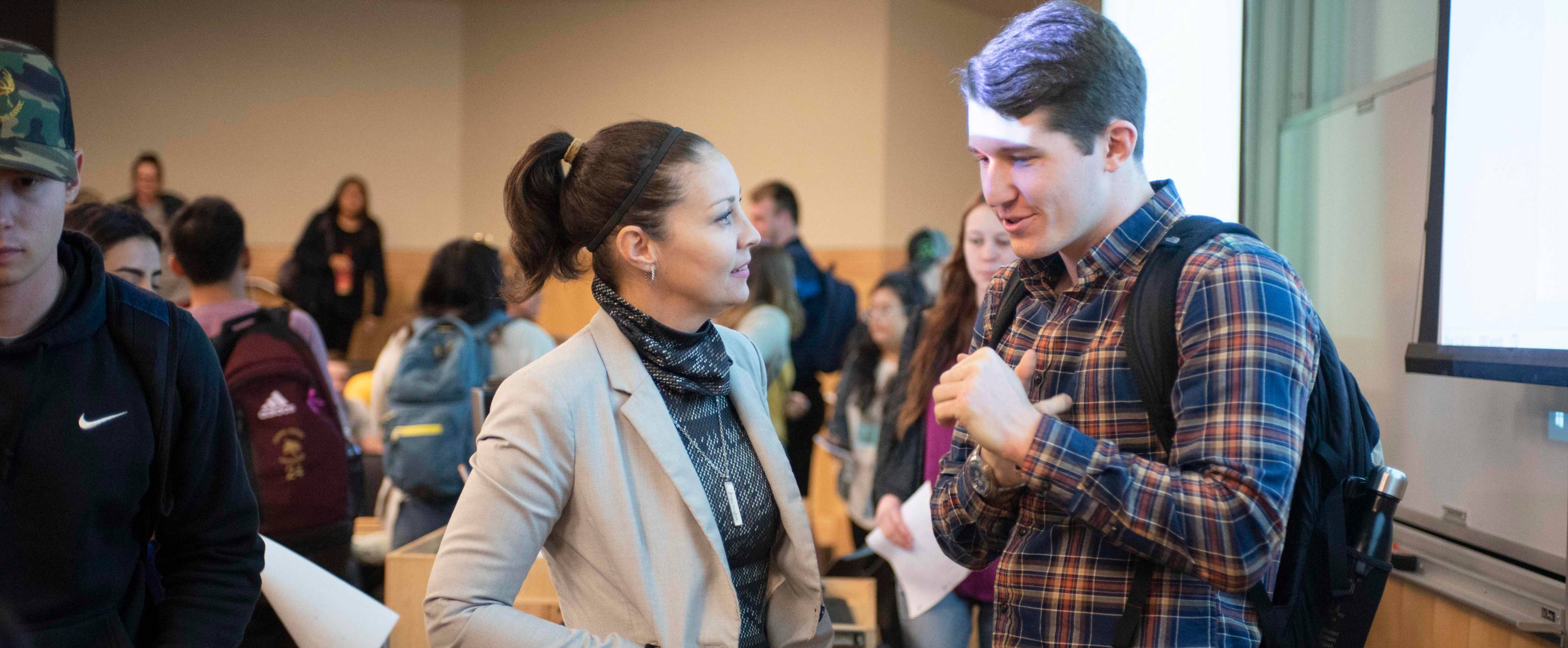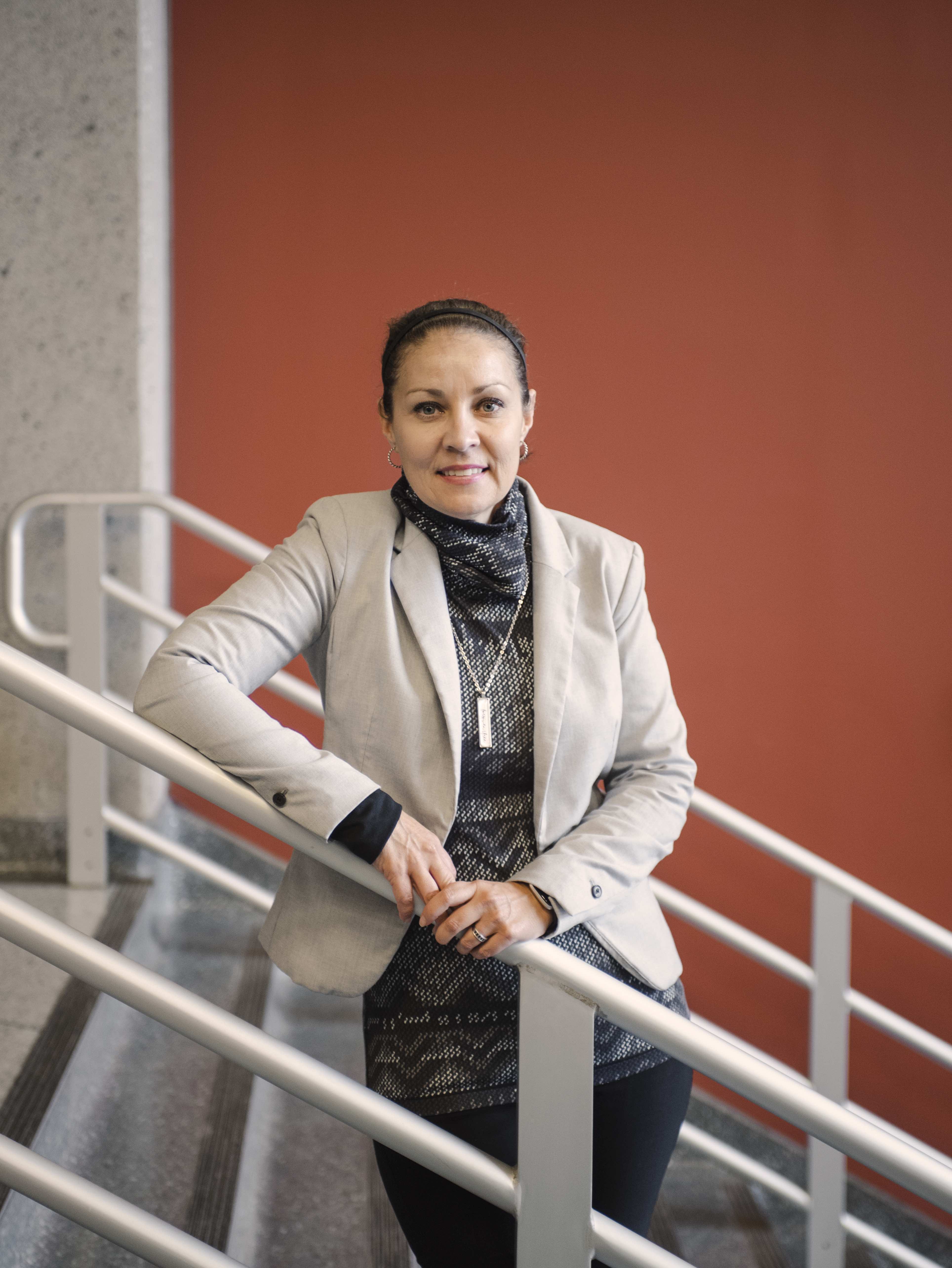Building Better Business Leaders

When Dr. Stephanie Solansky joined the McCoy College in 2018, she was charged with reconceptualizing the management program’s business communication and professional development class. After working for years as a director in a multimillion-dollar leadership program, training education administrators across the state of Texas, this new challenge was right up her alley.
“Leadership development is something that I did as a practitioner, it’s something that I do as a scholar, and it’s really awesome to now do it in the classroom.”
Solansky’s innovative approach to bringing leadership training into the undergraduate classroom earned her the 2019 McCoy College Advisory Board Teaching Excellence Award.
Her receipt of the award reflects the fact she spent her first year here “working obsessively, taking risks, and trying to do things differently.” Moreover, it follows naturally from her longstanding belief that “When you’re teaching leadership development, added value is the critical thing. What’s the takeaway? Can you make it experiential? Can you make it hands-on? Can you give students a transferrable skill they can use in their personal and professional life? That’s where I’ve pushed understanding leadership development from a methodology standpoint.” She says leadership skills are an essential element of the curriculum, “especially with undergrads, because leadership development is often reserved for people on a path towards upward mobilization within an organization,” but these skills are just as beneficial for students in the early stages of their professional careers.

Solansky’s ambition is not merely to help students “understand the process of leadership development, but to push the theoretical boundaries.” For example, she introduces her students to complexity theory, drawing on a paper she published in Human Relations. That paper explores how stabilizing and destabilizing tensions within dynamic organizations can be beneficial when those tensions help organizations achieve an intentional, effective state of organizing that avoids the boundary conditions of equilibrium and chaos.
“Exposing students to an idea like complexity theory, which isn’t covered in a typical undergraduate program, can get them thinking about the tensions in their own lives. Some of those tensions can stabilize them, and others can destabilize them. In order to grow they need to be uncomfortable, which feels destabilizing.”
In order to make subjects like complexity theory concrete for students, Solansky grounds their application in students’ shared experiences. “For example, sometimes a student’s family can serve as a stabilizing tension, but sometimes that same family is the most destabilizing force in the student’s life. It’s not just about balancing competing tensions. Sometimes a single tension can be either stabilizing or destabilizing depending on the context. That’s where complexity theory becomes very practical. I build a bridge from the academic, theoretical, abstract world to real life, so practitioners can use those theories to manage themselves and others better.” She says that her office hours are typically very busy, because so many students want to meet with her to discuss how the theories that she introduces in the classroom have made them think differently about their lives and their career plans.

In addition to the changes she’s made to the curriculum, Solansky adds value for students by pushing them to explore the wide array of career-building resources available at Texas State. She requires her students to take advantage of opportunities for professional development available through the CommLab, the career services office’s resume review and mock interview services, and Business Leadership Week events.
In reformulating the class, Solansky prioritized the needs of not just her students but also the faculty, who she describes as an “amazing, dedicated, committed, super-talented group.” In her view, the previous model was challenging because it is a writing-intensive four-hour class with a lab, combining both B-comm and professional development content. She says “I changed the way almost everything was done, while trying to maintain the core content. I was obsessed with how to add value to the student experience and reduce the stress of the faculty who felt overwhelmed by the challenge of balancing the expectations for the lecture, the lab, and the team approach.”
The Teaching Excellence Award and the positive feedback she’s received, from faculty and students alike, have encouraged Solansky to continue to think disruptively in designing her courses. For example, she is exploring additional opportunities to make the course more experiential through pushing the boundaries of innovation and integration by embracing emerging technologies and methodologies. She says, “When the Dean announced the award, I was shocked. It confirmed that I’d laid a good foundation, and it motivated me to do even more.” Given Solansky’s creativity, drive and passion for leadership, there’s no question that she will continue to add value to the McCoy College, from top to bottom, well into the future.